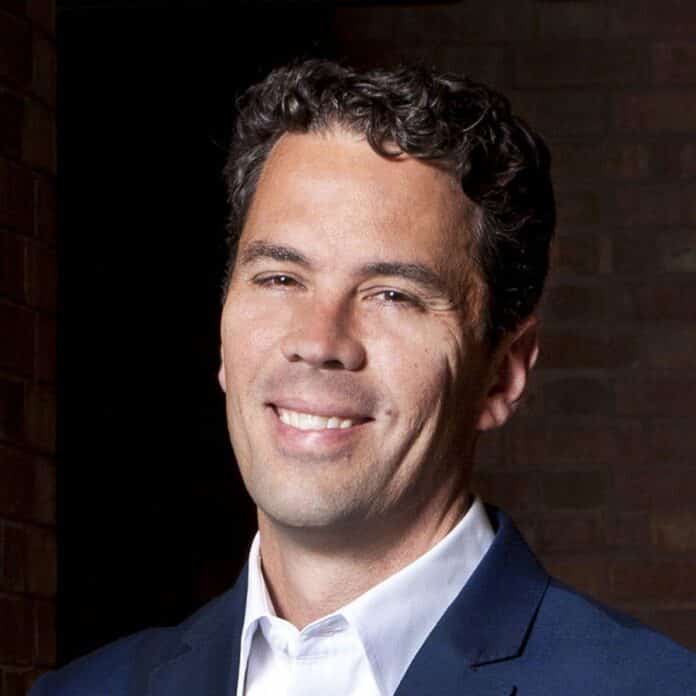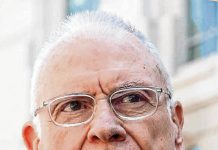It is truly inspiring to see so many in Columbus helping others, working to insure that the most vulnerable are safe and healthy.
For those that are able, I would like to take a little time to look back at the past, to remember those who worked to build their visions of a thriving county. This coronavirus reminds us that even when life isn’t fair or just, we are at our best when we work collectively on projects that benefit everyone.
We are stronger together, and we have been working like this for a long time in Columbus, Indiana.
One of the first projects that demonstrated this way of thinking was realized on a hot day in July of 1844 when the first passenger train in Bartholomew County rolled to a stop at the corner of Fifth and Franklin streets. It came from Madison, picked up Columbus passengers, and steamed on to Indianapolis.
With puffs of white rising into the air and flags fluttering over railings, the community’s social and business network became better connected to the former and current capitals of the state—and much further east and west. At this moment Columbus changed: businesses blossomed, new houses were hammered together along downtown dirt roads, goods and labor were traded from near and far, and church steeples rose into the sky. For many, new paths to prosperity appeared, and the population grew with a new sense of innovation and possibility.
Thirty years later, on December 29, 1874, most of the citizens of Bartholomew County celebrated the opening of a new courthouse. At the cost of a quarter million dollars, this community-wide, public investment was immediately declared “the finest, most elegant and costly building, by all odds, in the state.” Nearly everyone in the county—and many from the region—participated in the dedication of this masterpiece of brick and Indiana limestone.
That night folks listened to speeches and gathered in the courtroom for a community meal at which 1,000 were served. The clock tower rang out into darkness, and dreams of futures flashed into newly imagined frontiers.
Today yellow school busses and their diesel engines remain idled in garages. Even though the schools that were built in the 1960s and 70s are now empty and silent, like so many factory lines, we know that these intergeneration investments will soon be filled with children eager to learn.
“The Hope of Our Country” will inherit a different world when this is all over.
This is a tough and lonely time for many. We’re left to look out of our windows, click the screens, watch videos, and read the news. This digital world is a thin representation of community.
The sidewalks remain ready to connect us to the many doors of small businesses and lead us back to vibrant public spaces and exceptional buildings that have come to define Columbus, from the Library Plaza with the “Large Arch,” to Mill Race Park, or the Bartholomew County Courthouse, which we’ve walked around a thousand times, and for which we will once again enjoy together as a community when it is safe to do so.
It is a time to reconsider how cities everywhere can be the best community of their size, and as Columbus starts to contemplate its bicentennial in 2021, it is a time to think further back into history to recognize those who occupied this land before the pioneers arrived, and a time to recognize those not visible in the history books (and on whose backs much of the country was built).
As a friend recently told me, the era of cities working to “attract talent” is paused; instead we all are busy working on how to build our social networks and renewed sense of community. And what better place to look for a sense of community and a social network than Columbus: a city of some 50,000 that leads the state in many ways.
Let us look to the traditions and values that have come to define our city for a new path forward. Let us look to the beautiful, and vital healthcare facilities, parks, and public places—nearly all of which were designed and built with support from the community’s largest employer and taxpayer, Cummins, and for which we have all benefited greatly.
The built environment of Columbus represents a quest for excellence and shows that the past is a model for the present. I know Columbus will again show that the path forward must be created by those who are willing to be different by design, that creative problem solvers and risk takers will lead the way.
Here’s hoping that the path forward is built with collaboration, coalitions, and communities working together, as it has been done here for nearly 200 years.
Richard McCoy is the founding executive director of Landmark Columbus. Send comments to [email protected].
Richard McCoy is the executive director of Landmark Columbus. Send comments to [email protected]




